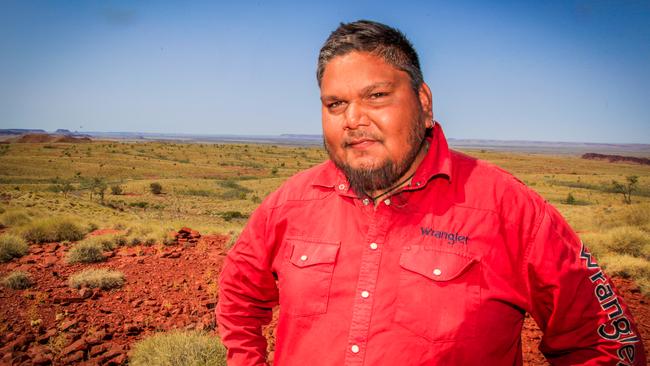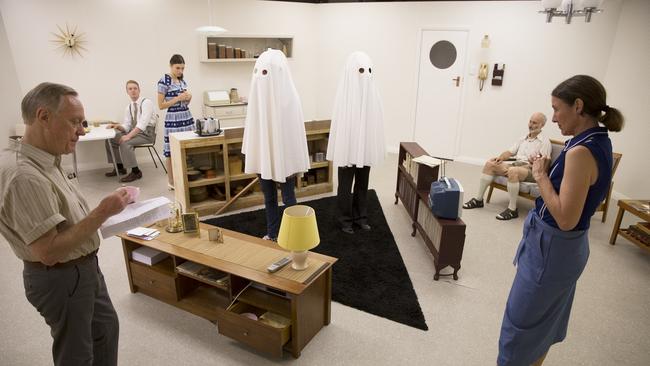Welcome to Country app offers indigenous community links
Technology is being harnessed in amazing ways that bring history and heritage to life for younger generations.

Technology is being harnessed in new and amazing ways to bring history and heritage to life for younger generations.
One of them is an inspiring project about one of mankind’s darkest periods. The New Dimensions for Technology project developed by the University of southern California aims to present the personal testimony of Holocaust survivors to the public through the use of holograms. University of Huddersfield in Yorkshire is building a similar experience in virtual reality.
In Australia the richness of our indigenous culture is finding a voice on the devices of younger generations using common technology: smartphones and an app called Welcome to Country. Developed by Tyson Mowarin from Roebourne in WA’s Pilbara Region, Welcome to Country offers a geo-specific Welcome to Country video for the tribal area you are entering. You also might be offered other geo-specific video and text on local fauna and flora and links to social media with those communities.
Currently media exists for about 40 tribal groups and, if notifications are activated, you are notified when you enter a new tribal area. It’s a remarkable effort by Mr Mowarin, a creative director at Weerianna Street Media, who developed a thirst for modern technology while growing up in one of Australia’s remote communities.
“I’d get on my laptop and write down a lot of ideas for all sorts of apps,” he said. “There were hunting apps, fishing apps.”
While these didn’t come to fruition, Welcome to Country eventually did. It was soft launched in October last year.
The major work involves collecting and geo-tagging media, so it can be available whenever you enter a new tribal region. Mr Mowarin said he had concentrated on media around Australian airports so that tourists could enjoy the app. But they’re intending to expand the offering to every single region nationally.
Most of the effort now involves contacting elders and working with communities to gain their consent for the media used. Mr Mowarin said friends and colleagues were helping produce content for the project. He had been working closely with Simon te Brinke from Gramercy Park Consulting in Perth who built the app.
Mr te Brinke said he wanted to include other sources of indigenous media that have video tagged with their tribal language, and he’s seeking to work with libraries and museums. Audio is in English or captioned in English if an elder’s welcome is in a local language.
Last month Mr Mowan attend a Prime Minister’s reception for indigenous innovators and entrepreneurs which celebrated their achievements.
--------
The potential for virtual reality and 360-degree video seems limitless. There’s talk of theme parks being built around the world where you don a headset to witness a large array of out-of-world experiences and it seems that Hollywood’s studios won’t be backward in adopting it. There’s Zero Latency in Melbourne where you pay $88 to walk around with an Oculus Rift headset shooting at packs of zombies — if that rocks your boat.
Then there’s the arts. Last week I saw Ghosts, Toast and the Things Unsaid, a unique piece of theatre at the Adelaide Fringe where an audience of two people at at time is surrounded by three concurrently running parts of a play. At any moment, you must choose which part to watch and which way to look, the dilemma you face watching 360-degree video.

But it could go much further. If Facebook founder Mark Zuckerberg’s vision comes to pass, and you can be thrust live into a remote place, such as a friend’s house, that could include being thrust into an elaborately designed stage set that you could wander around and explore.
At the beginning of each scene, audience members wearing VR headsets could be ported into the particular location of that scene. In a Shakespeare play where the current scene is a tavern, you could be thrust into that tavern with an ability to walk around in the background and observe the dialogue from close quarters.
When the scene changes the audience might then be thrust into the royal court or onto a medieval battlefield.
It’s an idea that interests people such as Google Creative Lab’s Tom Uglow. Creative Lab has been promoting the use of connected technology in the arts in Australia.


